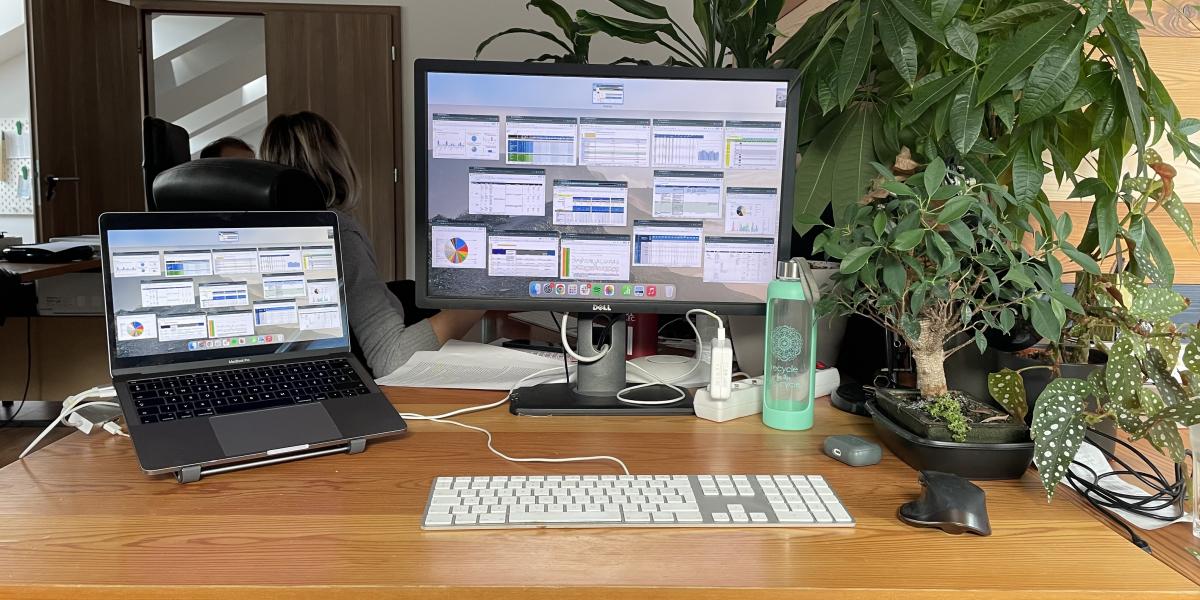
I've never been a fan of charts. I studied humanities, and I've always been comfortable in the world of multi-compound sentences. I got it from my dad that I never put things in the same place, and my drawers are - at first glance - a mess. Even now, it surprises me sometimes when I am in a meeting and I hear, "Andi, could you make a spreadsheet for this?" (Why me?)
Then I recall the meetings I have organised over the years: in the small meeting room or in the big one, with a projector or with screen sharing, for a few people or for the whole team. I see my screen and hear my voice as I start "So, I have a spreadsheet for this..." (OMG!)
Now, of course, I say to myself, "my spreadsheets are exciting, one is a real logic game, the other presents a topic in a perspective we never thought possible, and without the third we would never have started a project." I wonder if others realise this? Or do they merely see a monolithic alternation of columns and rows, interrupted now and then by a conditional formatting or a graph? And when did I become such a nerd that the subject of my blog post is google sheet?
But the whole idea was to reduce the number of spreadsheets. When I came to Integral Vision, each account manager had his own system for tracking which customer had to be issued a certificate of completion or invoice when, and our treasurer had his own statement. It was hard to reconcile the data. I just wanted to simplify our processes.
Experience shows that we have succeeded. Since then, there are hardly any questions about whether a report or invoice has been issued, sent out or when it should happen. However, the idea of simplification and standardisation has also led to new ideas. If we can see in a spreadsheet what happens when, then we can forecast our revenues. If we combine financial data with our capacity planning, our forecasting can be pretty accurate. But it only makes sense if we can also anticipate our expenses. Furthermore, it would be quite useful if we could keep our expenditure forecasting flexible. In fact, what if we could include prospects for new projects within our financial and even capacity planning?
We are clicking on the graphs to see how a new project will impact our year in terms of resource requirements and financially, to see what schedule we can work well and sustainably. What a nice, transparent graph," say the team. I can see underneath the complex web of automated queries, data synchronisations, formulas and protected cells. It is sometimes as demanding to maintain as it is exciting to navigate within to find answers to new questions.
So I have about 20 spreadsheets - let's not even look at the number of tabs - that I maintain, link to each other, upgrade a little bit every year, and there's not a day that I don't work with one of them. I'd be happy to have a break, I don't need any more spreadsheets. Let's plan a project or a business strategy instead.
I review the materials, ideas trying to put the mass of information into a tangible form that can be shared with others, so that we have a starting point and a common understanding. I am already opening a new spreadsheet. It seems, the flexible structure of rows and columns will help. It will help me organise, communicate, and help us to reach common ground and distribute tasks in a meeting efficiently. It also facilitates follow-up. Sometimes a spreadsheet will guide us through a whole project, sometimes it fulfils its purpose during the meeting and we never open it again. Sometimes it is complex, sometimes it is just a few lines long. There are also many that have never been seen by any one else but me. So I keep creating the sheets because I feel they give us a handhold, bring us to a common ground and move us through obstacles.
At one point, I wondered what it would be like to write this post using a spreadsheet, but fortunately this formatting is not available on our site. No, it wouldn't be practical to write a blog in this way, and there are many other things that spreadsheets are not good for. Anyway, I've been amazed at how much time has been saved over the years and at how many doors and windows - thankfully not to spreadsheets - columns and functions have opened up for us.
Share with your friends!